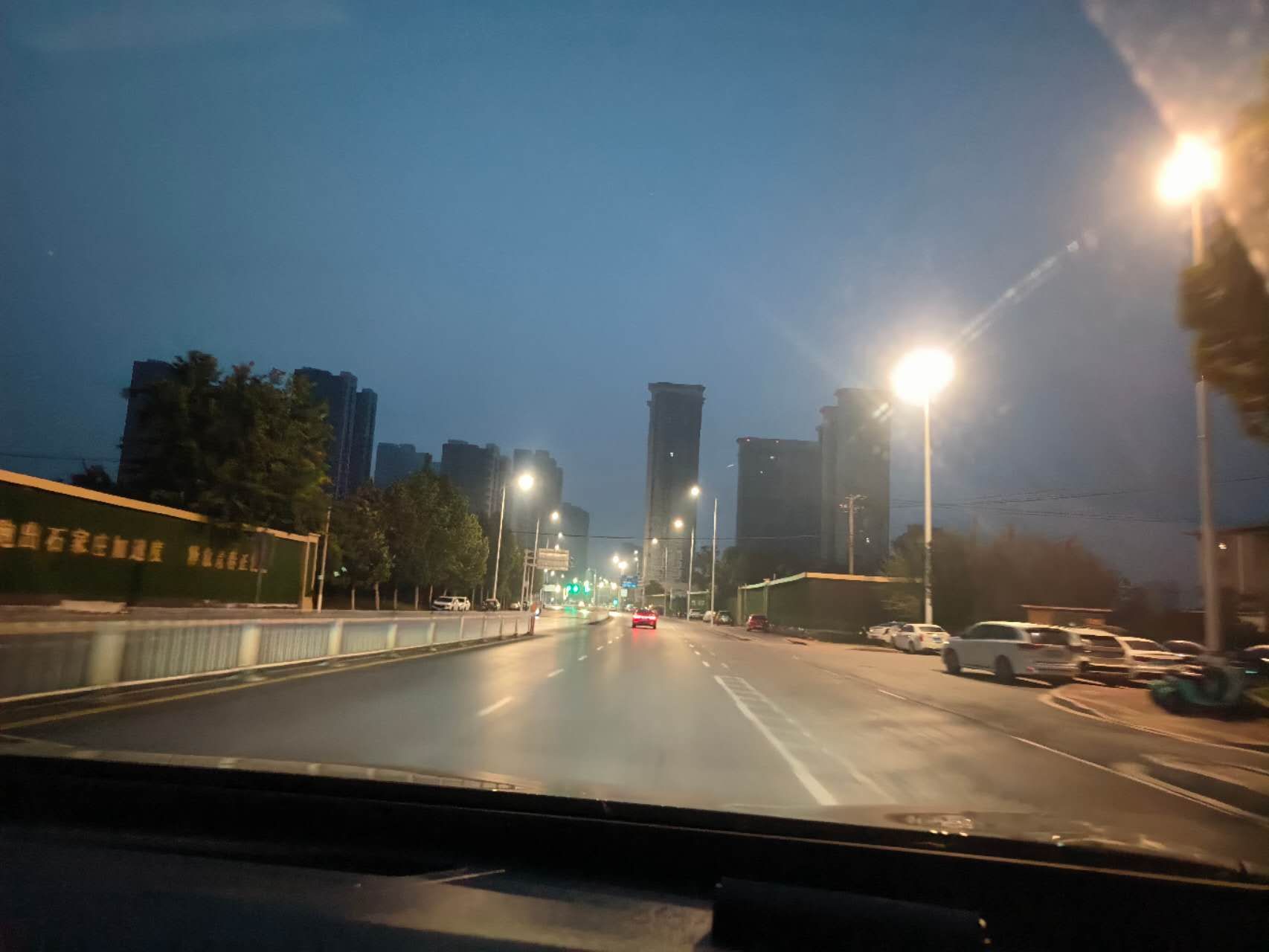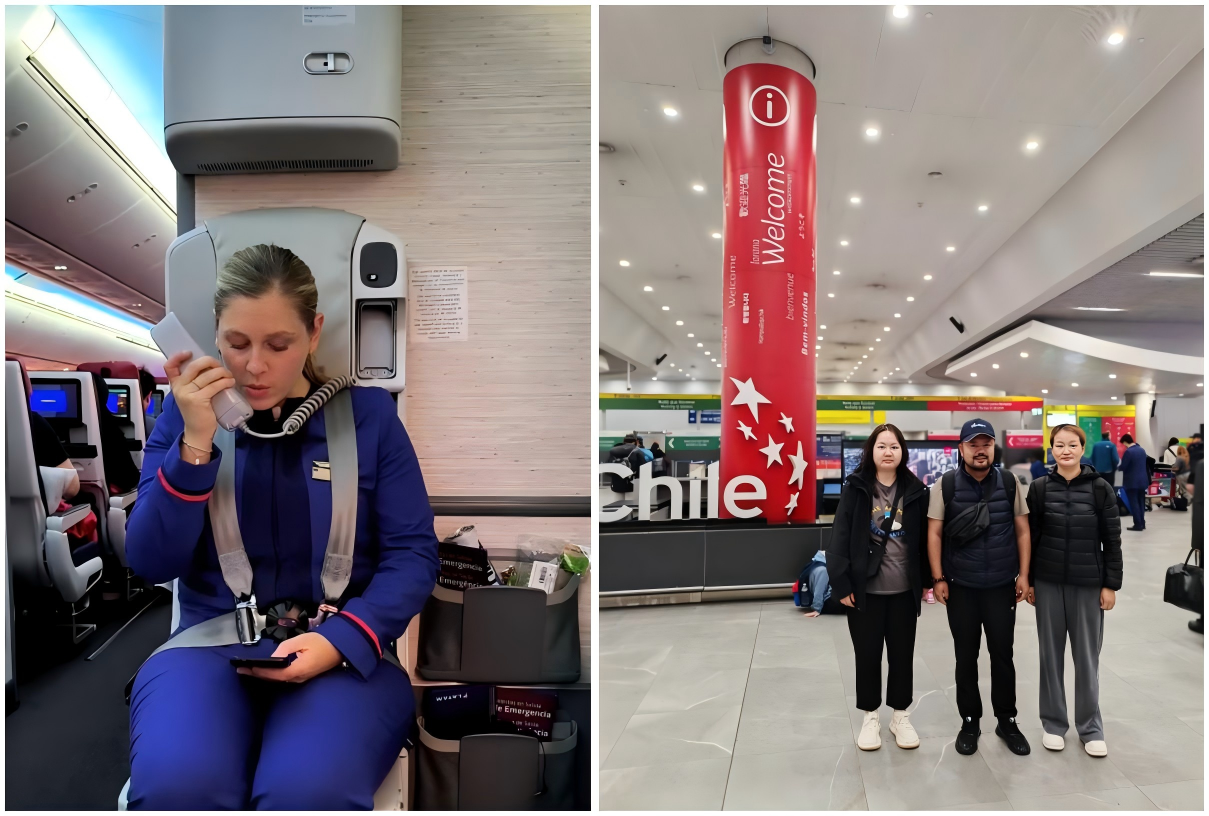At 4:30 a.m. on August 15, 2025, the three of us boarded a bus to Shijiazhuang Zhengding Airport. This time, our destination was South America. We planned to spend 28 days visiting clients in four countries: Chile, Peru, Venezuela, and Mexico.
The official language in South American countries is Spanish, and most people there do not speak English. Without Spanish, communication becomes very difficult.
First, we departed from Zhengding on flight KN2355 to Shanghai. From Shanghai, we flew out on flight MU835, transited through Los Angeles, USA, and then took flight LA603 to Santiago, the capital of Chile. The total flight time exceeded 40 hours. This should be the longest flight distance, because South America is the farthest region from China—even farther than Africa. Generally, flying to South America is most convenient and time-saving via the United States. However, transiting through the U.S. requires a U.S. visa, and all luggage transiting the U.S. cannot be checked through; it must go through U.S. customs inspection and be re-checked. Of course, to make the transfer, we had to enter the U.S. with a U.S. visa before flying to another country. It should be noted that many Chinese people do not have U.S. visas and thus must transfer through other countries, which makes tickets more expensive and travel time longer. That is why very few Chinese people come to South America, and many Chinese airlines do not fly to the smaller South American countries, so only international airlines can be chosen.



On the morning of August 16, 2025, at 6:00 a.m., accompanied by a Spanish announcement, our plane safely landed at Santiago International Airport in Chile. The eye-catching welcome sign at the airport captured our presence.
Before coming to Chile, we had already made various preparations, including luggage weight limits, carry-on baggage rules, passports, U.S. visas, departure tickets, whether customs duties would be charged, safety issues, car rental, and driving concerns.
Fortunately, entry into Chile went very smoothly. Finally, the customs officer said: “Welcome to Chile.” Only then did we feel relieved—we had successfully entered Chile. After entry, we went to collect our luggage. Out of our three pieces of luggage, one was missing. After investigation, it was found that it had been left behind in the United States and would only arrive the next day. When we retrieved the luggage the following day, the items inside were already in disorder, clearly inspected by customs. We guessed the reason for the delay might have been that we brought a rice cooker, along with noodles and cooked sauce. Customs is very strict with food items.
When we arrived in Chile, it was winter there, with temperatures between 5–15°C, so we had to wear winter clothing.


After collecting our luggage, we went to the car rental office to pick up our vehicle. The car had been reserved in advance through Ctrip. Chile allows car rental with a Chinese driver’s license. The daily rental cost was just over 300 RMB, including insurance. It should be noted that although insurance was included, there was a deductible. We added extra coverage to reduce the deductible to zero, as well as theft insurance, tire insurance, and chassis insurance. It is always better to spend a little more money abroad for extra protection. The insurance purchased through Ctrip was underwritten by Ping An Insurance in China, which means that in the event of an accident, expenses must first be paid out of pocket, and reimbursement is made after returning to China with proof.
The picture shows the car we rented—a compact car with a trunk that could only fit two suitcases, so the third suitcase had to be placed in the back seat. Compact cars have lower rental costs.
When we checked using Baidu, it stated that in Chile the driver’s seat was on the right. The rental company gave us a manual transmission car, and we were very worried about driving safety. However, once we got on the street, we discovered that most cars had the driver’s seat on the left, which reassured us. It turned out that Baidu Baike was wrong, and we had been worried for nothing. With that, we drove our little car and began our four-day business trip in Chile.



In Chile, we stayed at a serviced apartment. The landlord told us that check-in was not until 2:00 p.m., but we had already arrived in Chile at 7:00 a.m. With nowhere to go, we decided to do some sightseeing. We went to the famous San Cristóbal Hill, a landmark of Santiago that offers a panoramic view of the city. By chance, we encountered Chilean students on a field trip. Their teacher asked them to take photos with foreigners, which is how we ended up in photos with local Chileans as “foreign guests.”
In the Chilean winter, the snow-covered mountains are beautiful, attracting tourists from all over the world to see the scenery and go skiing.

After more than 40 hours of flying and eating only airplane meals, we arrived in Chile in the morning without having had breakfast. By noon, after sightseeing, we decided to have a good meal. We went to the famous Santiago restaurant OK Panda for buffet lunch, costing about 80 RMB per person. The buffet offered braised pork, stewed beef, stewed chicken, various Western dishes, various seafood, and beverages (charged separately). The three of us had a very satisfying meal.


After lunch, we checked into our apartment, a two-bedroom, two-living-room unit. We circled the block three times before finding a parking space. When entering the elevator from the parking garage, we were confused: there was no cell signal, and all the doors leading to the elevator were locked. Through the intercom, we called security. The guard told us to connect to the garage WiFi, then scan a code to open the door to the elevator. This was part of Chile’s security measures. Finally, we successfully reached our room.

As mentioned earlier, after a hearty lunch we skipped dinner. The picture shows our breakfast on the second day in Chile: scrambled eggs with green onions, a bowl of corn porridge, and flatbread—a truly satisfying breakfast. The reason we chose an apartment was that we were not used to the local food and needed to cook for ourselves. Usually, when abroad, we only eat two meals a day.
So, what kind of country is Chile?
The official language of Chile is Spanish. The national territory covers 756,715 square kilometers. Chile is divided into 16 regions, under which there are 54 provinces and 346 communes. The capital city is Santiago. It is the longest and narrowest country in the world.
Chile’s total population is 19.76 million, with 88% living in urban areas. It is one of the more economically developed countries in Latin America. Mining, forestry, fishing, and agriculture are the four pillars of its national economy. Chile has the world’s largest copper reserves. In 2024, its GDP reached 344.3 billion USD, with a per capita GDP of 17,564 USD.
Chile’s public transportation is well-developed, and people generally use public transport for travel. Chilean drivers drive very fast, and it is not recommended to change lanes casually on normal roads.












